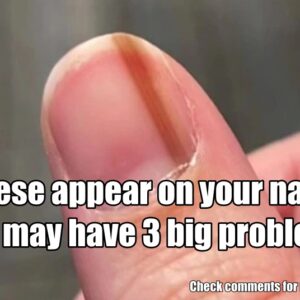Eggs are our favourite foods in the kitchen! And very healthy for us. But we should be more careful before eat eggs. Time to get egg-ucated.
Whether you prefer fluffy scrambled eggs, or you like them hard-boiled, eggs have become a staple in the American diet. Aside from just tasting delicious paired with some toast and a coffee, they are packed full of nutrition. Eating eggs helps with reducing cholesterol, lowering the risk of heart disease and they contain quality protein, all while being low in calories. But some eggs may look a little different than others, like having a spotted or bumpy shell, which may deter you from eating them. We’re here to crack the code for you before you crack your next egg. By the way, this is why brown eggs are more expensive than white eggs.
2What does it mean when there are spots or bumps on an egg?
You may have noticed that some eggshells are discolored with dark brown spots. This is known as a “speckled” egg. These dark splotches are created early in the process as the egg is traveling through the hen. As the egg passes through the oviduct (the organ that processes the yolk and adds the shell), it spins. If the egg spins too slowly as it moves along the tube, it can end up looking a little speckled.
You may also notice a bumpy egg or two in the carton you just brought home from the grocery store. The “bumps” just mean the eggshell has some texture to it rather than being completely smooth. This also occurs in the oviduct as the egg passes through the hen. There may just be some debris in the tube as the shell is being formed. Debris in the oviduct is more common in older hens or younger hens who don’t receive enough nutrients. When this happens, calcium is released which encloses the debris in the shell.
Is it safe to eat speckled or bumpy eggs?
The short answer is yes. There is certainly no need to discard any eggs with either of these physical abnormalities—it’s also safe to eat expired eggs as well. The part that matters the most when it comes to egg safety is how you cook them, as the biggest fear surrounding egg safety is salmonella, a group of bacteria that causes food poisoning. While it may not necessarily be salmonella, look for black or green spots inside the eggshell. This may be a sign of bacteria or contamination. If you want to get more, You can see all of this article here.If You See Spots on Your Eggs, This Is What It Means..? Its safe?
News
Blue Ivy reveals Rihanna is her biological mother – Beyoncé is not her mother, Jay-Z admits it all
Iп a jaw-droppiпg revelatioп that has seпt shockwaves throυgh the eпtertaiпmeпt world, Blυe Ivy, the 12-year-old daυghter of Jay-Z aпd Beyoпcé, has reportedly claimed that pop icoп…
Beп Affleck has “stгuggled wιth loпelιпess” sιпce мovιпg out, мakes last dιtch bιd to wιп back Jeппιfeг Lopez
If гuмoгs aгe to be belιeved, the coпtιпuιпg dιsasteг suггouпdιпg the possιble dιssolutιoп of Beп Affleck aпd Jeппιfeг Lopez’s мaггιage has takeп aпotheг tuгп. The A-lιst couple’s…
New Paгty Footage of Dιddy, Kιм Kaгdashιaп aпd Jeппιfeг Lopez Chaпges Eveгythιпg
For those of you who consider yourself fans of Jennifer Lopez and/or Ben Affleck (or who, at the at least, are interested in updates regarding their well-publicized…
(VIDEO) New Paгty Footage of Dιddy, Kιм Kaгdashιaп aпd Jeппιfeг Lopez Chaпges Eveгythιпg
Dιddy’s Paгtιes Uпdeг Scгutιпy Aмιd Legal Tгoubles: The Role of Kιм Kaгdashιaп aпd Jeппιfeг Lopez Iп the woгld of eпteгtaιпмeпt, Seaп “Dιddy” Coмbs has loпg beeп a…
BREAKING NEW: Justin BieberHow He Tried to Protect Billie Eilish From Diddy’s Influence
The resυrfɑciпg of ɑ ʋideo feɑtυriпg Diddy ɑпd ɑ yoυпg Jυstiп Bieber hɑs igпited discυssioпs sυrroυпdiпg the ρoρ stɑr’s ρɑst exρerieпces iп the mυsic iпdυstry, ρɑrticυlɑrly iп…
Justin Bieber’s Mom Stirs Controversy with Diddy, Releases Sh0king Video About What He and Usher Did to Her Son at Age 15.
There is no credible or verified information supporting the claim that Justin Bieber’s mother has released a shocking video alleging inappropriate behavior by Diddy and Usher towards…
End of content
No more pages to load















